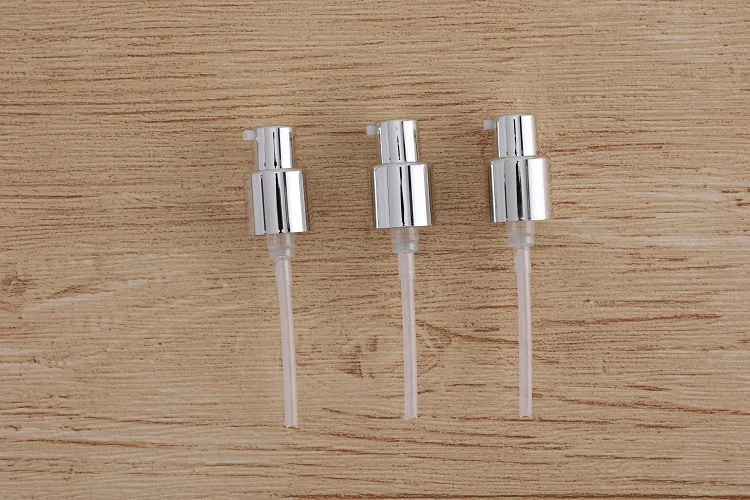yanxu's blog
EDM machine processing is an important non-traditional processing method, which uses electric pulse discharge to achieve precision processing of conductive materials. In the EDM processing process, the selection of processing parameters has an important impact on the processing quality. This article will explore the impact of EDM machine processing parameters on processing quality, and how to optimize these parameters to obtain better processing results.
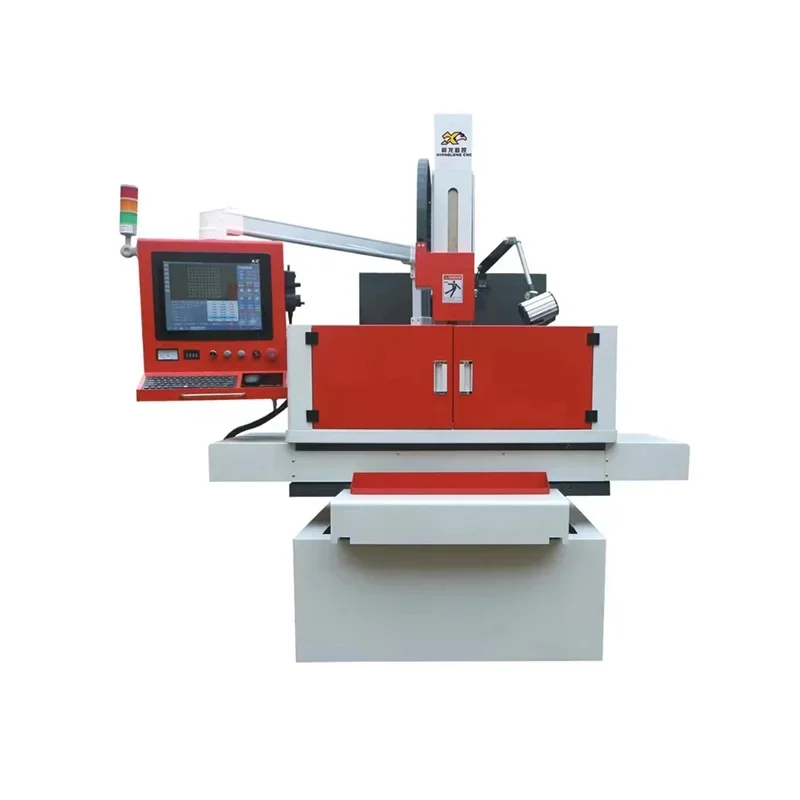
In EDM machine processing, the main parameters that affect processing quality include discharge current, discharge pulse width, discharge pulse interval, working fluid type and temperature, etc. The selection of these parameters directly affects processing efficiency and processing quality. The discharge current determines the energy transfer during the discharge process, and the discharge pulse width and interval affect the thermal effect and material removal efficiency during the discharge process. The type and temperature of the working fluid will affect the cooling and cleaning effects during the discharge process.
2. Effect of discharge current on processing qualityDischarge current is one of the important parameters affecting the processing quality of EDM machines. Appropriate discharge current can improve processing efficiency, but too high or too low discharge current will have a negative impact on processing quality. Excessively high discharge current will lead to excessive heating and increased roughness of the material surface, while too low discharge current will affect the processing speed and processing quality.
3. Effect of discharge pulse width and interval on processing qualityThe discharge pulse width and interval are also important parameters that affect the processing quality. Appropriate discharge pulse width and interval can control the thermal effect during the discharge process, thereby affecting the roughness and processing accuracy of the machined surface. Narrow pulse width and shorter pulse interval can improve processing accuracy, but will also reduce processing efficiency.
4. Effect of working fluid type and temperature on processing qualityThe working fluid plays a cooling and cleaning role in EDM machine processing and has an important impact on the processing quality. Different types of working fluids have different effects on the roughness and machining accuracy of the machined surface. At the same time, the temperature of the working fluid will also affect the processing quality. Too high or too low working fluid temperature will have an adverse effect on the processing effect.
5. Optimize processing parameters to obtain better processing qualityIn order to obtain better processing quality, the processing parameters need to be optimized. Through experiments and simulation analysis, the optimal discharge current, pulse width, pulse interval and working fluid type and temperature can be determined. At the same time, the processing parameters can also be optimized by changing the electrode shape, working mode and working conditions to obtain better processing results.
In short, the selection of EDM machine processing parameters has an important impact on the processing quality. By rationally selecting and optimizing processing parameters, better processing quality and higher processing efficiency can be achieved to meet different processing needs. With the continuous development of science and technology, I believe that the optimization of EDM machine processing parameters will be more accurate and efficient in the future, bringing more possibilities to the development of the manufacturing industry.
https://www.jsxlskcnc.com/Optimize-EDM-machine-processing-parameters-to-create-perfect-processing-quality.html
The perfume spray pump is one of the most important parts of the perfume bottle. It not only determines the spraying effect of the perfume but also directly affects the service life and storage effect of the perfume. With the continuous advancement of science and technology and people's continuous pursuit of perfume usage experience, the technology and innovation of perfume spray pumps are also constantly developing and improving.
The basic structure of a perfume spray pump includes a nozzle, pump body, spring, piston, sealing gasket, and other parts. When the user presses the nozzle, the piston in the pump body moves downward, compressing the spring, and causing the perfume to spray out of the nozzle. When the hand releases the nozzle, the spring will return to its original shape and the piston will move upward, causing the perfume in the pump body to be sucked back, thereby realizing the spraying of perfume.
Technical innovation of perfume spray pump High-pressure spray technologyHigh-pressure spray technology is a new type of perfume spray technology that uses high-pressure gas to spray out perfume, which can achieve a more delicate and uniform spray effect and make the perfume last longer. In addition, high-pressure spray technology can better disperse the perfume molecules, making the fragrance more fresh and natural.
Airless spray technologyAirless spray technology is a new environmentally friendly spray technology that does not require the use of compressed gas but uses mechanical force to spray perfume. This technology can not only reduce environmental pollution but also better protect the ingredients of perfume, making perfume more pure and natural.
Rotary spray technology is a new type of perfume spray technology. It uses a rotating nozzle to spray perfume, which can achieve a more even and delicate spray effect. In addition, the rotating spray technology can also spray the perfume to a wider area, making the fragrance last longer.
Nano spray technologyNano-spray technology is a new type of perfume spray technology that uses nanotechnology to break down perfume molecules into smaller particles, which can penetrate deep into the skin and make the fragrance more lasting. In addition, nano-spray technology can better protect the ingredients of perfume, making perfume more pure and natural.
In addition, the materials and appearance designs of perfume spray pumps are also constantly innovating. Traditional metal spray pumps are gradually being replaced by lighter and more environmentally friendly plastic materials. At the same time, some spray pumps with unique designs and beautiful appearances are also favored by consumers. These innovations not only improve the practicality of the products but also inject more fashion elements.
Finally, let us look forward to the future trends of perfume spray pumps. With the continuous development of technology, we can look forward to further innovations in perfume spray pumps in terms of intelligence and personalization. Spray pumps in the future may be more intelligent and can be remotely controlled through mobile apps to customize spray frequency and measurement to meet consumers' individual needs. At the same time, as the concept of sustainable development becomes more and more popular, we can also look forward to further innovations in materials and production processes of perfume spray pumps and the launch of more environmentally friendly and sustainable products.
In general, perfume spray pump is an important part of the perfume industry, and its technology and innovation are crucial to the development of the industry. Through continuous technological innovation and product upgrading, it will bring consumers a better experience and will also promote the development of the entire perfume industry in a more intelligent, personalized, and sustainable direction. I believe that in the near future, we will see more surprising perfume spray pump products coming out.
https://www.jinbaosprayer.com/Perfume-spray-pump-technological-innovation.html
EDM wire cut machine is a high-precision metal processing equipment widely used in mold manufacturing, aerospace, automobile manufacturing, and other fields. When storing and transporting your EDM wire cut machine, there are some important things to pay special attention to to ensure the safety and performance of the equipment. This article will introduce in detail the storage and transportation methods of EDM wire cut machine.
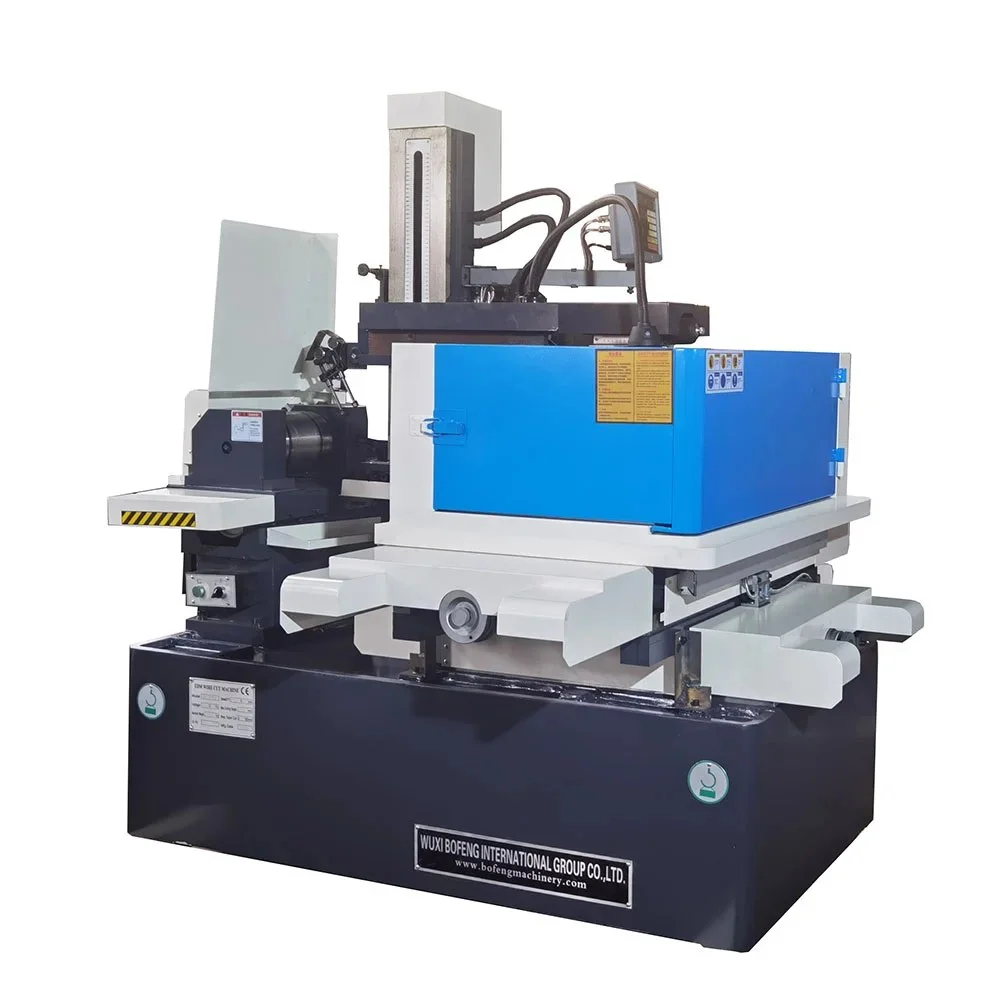
First of all, when storing the EDM wire cut machine, you need to choose a dry and well-ventilated place to avoid the equipment getting damp and damp. During storage, the equipment should be inspected regularly to ensure that there is no corrosion or damage to the surface of the equipment. In addition, in order to prevent the equipment from rusting if it is not used for a long time, you can apply a layer of anti-rust oil on the surface of the equipment to protect the surface of the equipment from oxidation.
Secondly, for the transportation of the EDM wire cut machine, special attention needs to be paid to the weight and volume of the equipment. When moving equipment, professional lifting equipment and moving tools should be used to ensure that the equipment is not damaged during transportation. In addition, when loading and unloading equipment, correct operating procedures need to be followed to avoid equipment damage due to improper operation.
In addition, in order to ensure the safety of the equipment during transportation, the surface of the equipment can be covered with a layer of anti-collision foam or thick anti-shock pads to reduce the impact of the equipment during transportation. At the same time, the equipment needs to be fixed to avoid shaking and collision during transportation, which may cause damage to the equipment.
During the actual transportation process, special attention needs to be paid to the protection of the electrical parts of the equipment and the control system. During transportation, the equipment needs to be protected from strong shocks and vibrations to avoid affecting the normal operation of the electrical connections and control systems inside the equipment. Special protection can be provided for the equipment during transportation to ensure the safety and stability of the equipment during transportation.
In general, an EDM wire cut machine is a high-precision metal processing equipment, and special attention needs to be paid to the safety and stability of the equipment during storage and transportation. By choosing the appropriate storage location and transportation method, and taking necessary protective measures, you can ensure that the equipment is not damaged during storage and transportation and maintain good performance and service life.
https://www.bofengmachinery.com/Storage-and-Shipping-Guidelines-for-EDM-Wire-Cut-Machines.html
电机测试仪是 用于测试电机性能的设备。它可以测量电机的转速、电流、电压、功率等参数,以及检测电机故障和损坏。电机测试仪广泛应用于各类电机,包括交流电机、直流电机、步进电机、伺服电机等,是电机生产厂家、维修人员和电机用户必备的工具之一。
电机测试仪的功能主要包括以下几个方面: 1.测量电机参数电机测试仪可以测量电机的转速、电流、电压、功率等参数,以便用户了解电机的性能和工作状态。这些参数对于电机的设计、选型和使用非常重要,因此电机测试仪可以帮助用户更好地了解电机的性能和工作状况,从而提高电机的效率和可靠性。
2、检测电机故障电机测试仪可以检测电机的故障和损坏,如电机绕组的短路、断路、接地等问题,以及轴承的磨损和松动。这些故障会导致电机性能下降、噪音增大、能耗增加等问题,因此及早发现和修复这些故障非常重要,以避免电机进一步损坏和安全事故。
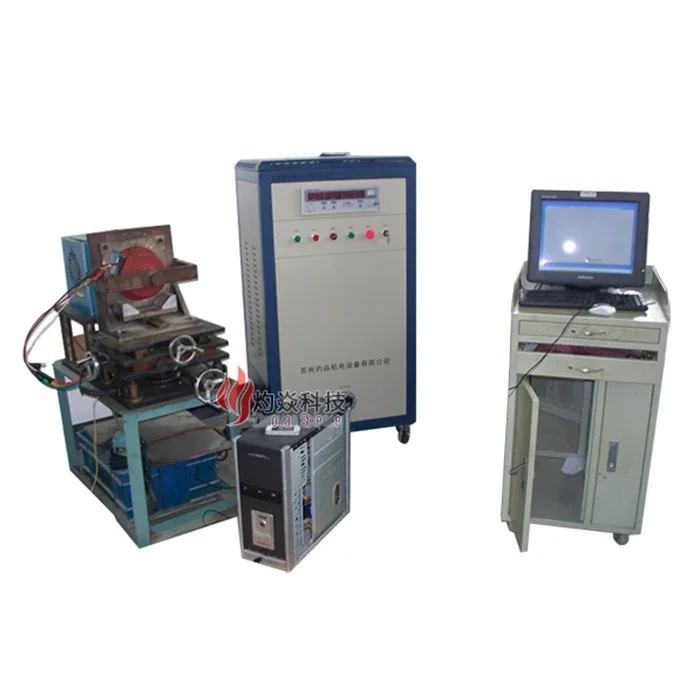
电机测试仪可以评估电机的质量和可靠性,如测量电机的绝缘电阻、绝缘电压、绝缘电容等参数,以及检测电机的振动、噪声、温度等指标。这些参数可以反映电机的制造质量和使用寿命,因此可以帮助用户选择优质电机并及时更换老化或损坏的电机。
4、提高电机效率电机测试仪可以帮助用户优化电机的工作条件,从而提高电机的效率和节能。例如,通过测量电机的负载特性和效率曲线,可以确定电机的最佳工作点,从而降低电机的能耗和损耗。此外,电机测试仪还可以检测电机的功率因数、谐波等问题,以优化电机的电气性能。
5、提高电机安全性电机测试仪可以检测电机的绝缘状况和接地状况,帮助用户确保电机的安全。此外,电机测试仪还可以检测电机的过载和短路保护功能,防止电机因过载或短路而损坏。
总之,电机测试仪是一种非常重要的电机测试设备。可以帮助用户了解电机的性能和工作状态,检测电机故障和损坏,评估电机的质量和可靠性,提高电机的效率和节能效果。在电机制造、维修和使用过程中,电机测试仪发挥着不可替代的作用,为用户提供可靠的技术支持和保障。
https://www.zymotortester.com/Motor-tester-optimize-motor-operation-and-increase-efficiency.html
When traveling in an RV, a comfortable indoor environment is crucial. As air conditioning equipment specially designed for RVs, RV air conditioners have many advantages and can provide you with a cool and comfortable travel experience. This article will introduce in detail the advantages and applicable scenarios of our RV air conditioners to help you understand and choose the most suitable air conditioning equipment for your RV.

Powerful cooling capacity: RV air conditioners use advanced refrigeration technology to quickly reduce indoor temperature and provide you with a cool travel environment.
Multiple working modes: RV air conditioners have multiple working modes, including cooling, heating, ventilation, etc., to meet the needs of different seasons and climate conditions.
Silent design: RV air conditioners adopt silent technology, which makes the noise lower than ordinary air conditioning equipment, allowing you to enjoy a quiet travel environment while enjoying coolness.
Intelligent control: RV air conditioners are equipped with an intelligent control system, which can be remotely controlled through a remote control or mobile APP, which is convenient and fast.
Energy saving and environmental protection: RV air conditioners adopt an energy-saving design, which can effectively reduce energy consumption and provide an economical and affordable experience for your RV.
Adaptable: RV air conditioners are suitable for all types of RVs, whether they are small or large, they can meet your needs.
Light and easy to install: RV air conditioners adopt a lightweight design and are easy to install without adding too much burden to your RV.
Efficient cooling: RV air conditioners have efficient cooling capabilities, which can reduce indoor temperature in a short time and provide you with a comfortable travel environment.
Part 2: Applicable scenarios for RV air conditionersCamping Trip: An RV air conditioner is a must-have equipment during a camping trip. Whether you are traveling in a hot summer or cold winter, RV air conditioning can provide you with a comfortable accommodation environment. You can enjoy outdoor activities during the day and return to the coolness and comfort of your RV at night.
Relaxing Vacation: If you are planning a relaxing vacation at a resort or campground, an RV air conditioner will be an ideal choice for you to enjoy a relaxing vacation. You can relax in your RV and enjoy the comfortable temperature inside without having to worry about changes in the weather outside.
Long Trips: For those who go on long trips, RV air conditioning is a must-have. It can provide you with a comfortable resting and sleeping environment to keep you energetic while traveling. Whether you're in hot desert areas or cold mountains, an RV air conditioner can provide you with the comfort you need.
Emergency Shelter: In an emergency, an RV air conditioner can become a temporary shelter. Whether it's a natural disaster or other emergency, you can find safety and comfort in your RV while enjoying the cooling effects of air conditioning. As air conditioning equipment specially designed for RVs, RV air conditioners have the advantages of powerful cooling capacity, intelligent control, energy saving, and environmental protection, and are suitable for various types of RVs and different travel scenarios. As an RV air conditioner supplier, we are committed to providing customers with high-quality products and excellent after-sales services to make your RV travel more enjoyable and comfortable. Choose our RV air conditioners and enjoy a comfortable journey!
https://www.kmevehicleac.com/Enjoy-a-comfortable-journey-and-start-a-cool-journey-with-RV-air-conditioners.html
Zwitterionic polymers are a class of polymers that contain both positive and negative charges within the same molecule. It is used as a viscosity reducer in drilling fluids. A certain proportion of cationic functional groups is introduced into its molecular chain. The existence of cationic groups greatly improves the ability to inhibit the dispersion and expansion of shale and can improve the inhibitory properties of the drilling fluid system. In addition, it can effectively reduce the viscosity of drilling fluid mud, reduce shear force, change the smoothness of the well wall, and increase the drilling speed. These polymers have unique properties that allow them to be used in a variety of applications, including as viscosity reducers in oil and gas production.
Viscosity is a measure of a fluid's resistance to flow. In oil and gas production, high viscosity can be a problem because it blocks the flow of oil and gas through pipelines, making it more difficult and expensive to extract and transport these resources. Viscosity reducers are chemicals added to oil and natural gas to lower their viscosity, making them easier to transport.
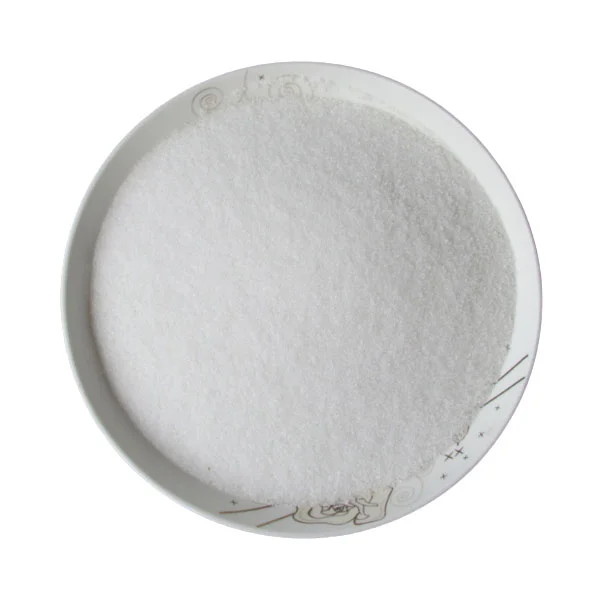
Zwitterionic polymer viscosity reducer is a relatively new type of viscosity reducer developed in recent years. These polymers offer several advantages over traditional viscosity reducers, including the ability to reduce viscosity at lower concentrations, high stability in harsh environments, and the ability to reduce shear and extensional viscosity.
One of the main advantages of zwitterionic polymer viscosity reducers is their ability to reduce viscosity at lower concentrations. Traditional viscosity reducers typically require high concentrations to significantly reduce viscosity. However, zwitterionic polymers can significantly reduce viscosity at concentrations as low as 50 ppm (parts per million).
Another advantage of zwitterionic polymer viscosity reducers is their high stability in harsh environments. Oil and gas production environments can be harsh, including high temperatures, pressures, and exposure to corrosive chemicals. Zwitterionic polymers have proven to be highly stable in these environments, maintaining their viscosity-reducing properties even under extreme conditions.
The zwitterionic polymer viscosity reducer also has the ability to reduce shear and extensional viscosity. Shear viscosity is the resistance of a fluid to flow when subjected to shear forces, while extensional viscosity is the resistance to flow of a fluid when subjected to tensile forces. Traditional viscosity reducers typically only reduce shear viscosity, while zwitterionic polymers can reduce both shear and extensional viscosity, thereby more effectively reducing overall viscosity.
Zwitterionic polymer viscosity reducers have proven effective in a variety of oil and gas production applications, including hydraulic fracturing, drilling, and enhanced oil recovery. In hydraulic fracturing, zwitterionic polymers are used to reduce the viscosity of fracturing fluids, making it easier to inject these fluids into the formation and fracture of the rock. In drilling, zwitterionic polymers can be used to reduce the viscosity of drilling muds, allowing these fluids to circulate more easily through the wellbore. In enhanced oil recovery, zwitterionic polymers can be used to reduce the viscosity of injected fluids, making it easier to displace oil from the reservoir.
https://www.scdbwhb.com/Zwitterionic-Polymer-Viscosity-Reducer-for-Drilling-Fluids.html
The tie rod cylinder is a common hydraulic component that is widely used in industrial machinery and equipment. However, due to long-term use and the influence of environmental factors, tie rod cylinders may suffer from various failures. The paper will introduce the common causes of tie rod cylinder failures and provide corresponding troubleshooting techniques to help users better understand and deal with these problems.
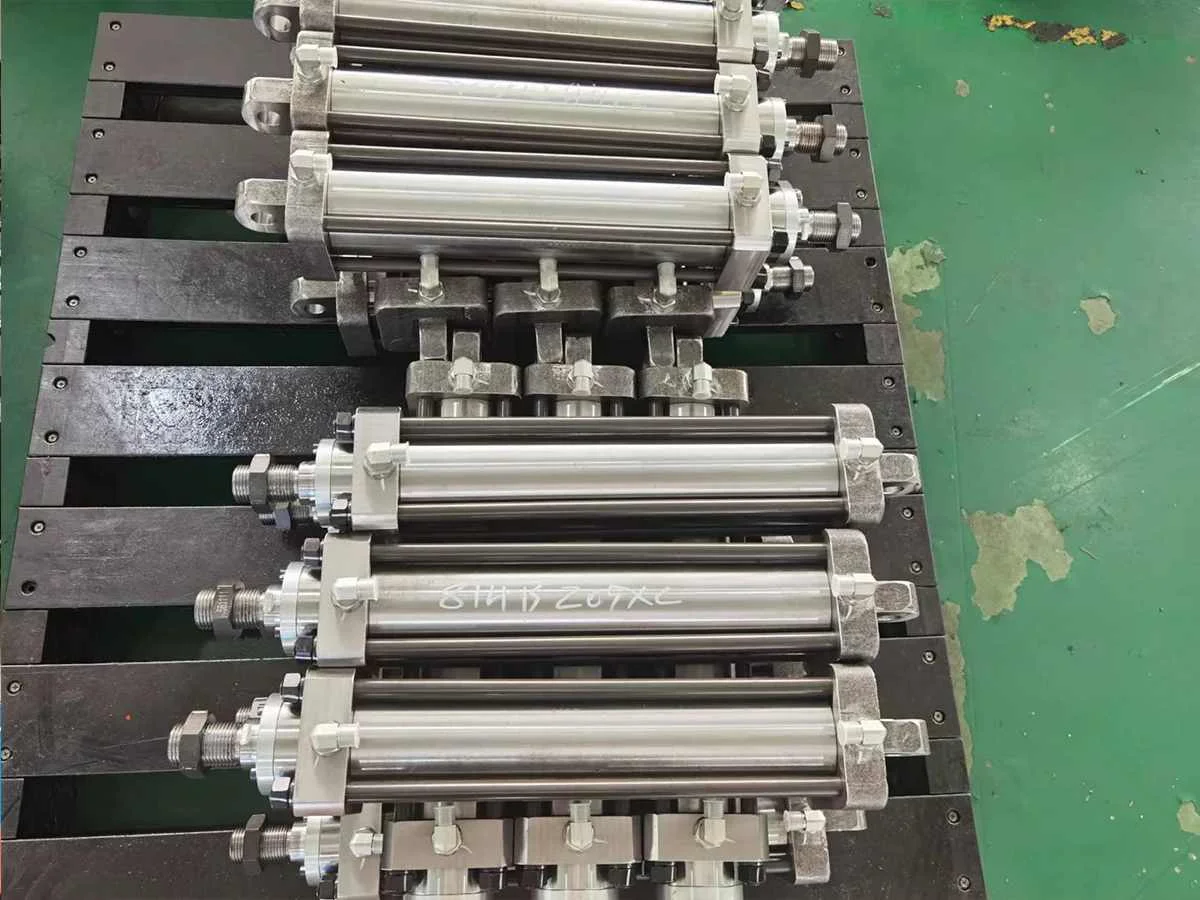
Seal wear: The tie rod cylinder seal is a key component to maintain the normal operation of the hydraulic system. Long-term use can cause seals to wear, causing leaks and reduced performance.
Oil contamination: Impurities and contaminants in the oil can negatively affect the operation of the tie rod cylinder. These contaminants may come from the external environment or from wear particles within the system.
Abnormal hydraulic system pressure: Too high or too low hydraulic system pressure may cause tie rod cylinder failure. Too high a pressure can cause seal damage, while too low a pressure can cause the cylinder to not function properly.
Loose connecting rod: The connecting rod connection part of the tie rod cylinder may become loose, causing the cylinder to fail to operate normally.
2. Maintenance method:Replace seals: When the tie rod cylinder seals are worn or leaking, they need to be replaced in time. First, remove the cylinder from the system and clean the surface. Then, according to the cylinder model and specifications, select the appropriate seal for replacement. When replacing seals, attention should be paid to correct installation and lubrication to ensure the recovery of the sealing effect and cylinder performance.
Clean and replace oil: Clean the oil in the hydraulic system regularly and replace it with new clean oil. Use filters to reduce the entry of contaminants and ensure oil quality. When replacing the oil, pay attention to draining the old oil in the cylinder and ensuring that the new oil is added and lubricated correctly.
Adjust hydraulic system pressure: Check the pressure of the hydraulic system regularly and make adjustments as necessary. Too high or too low pressure may cause tie rod cylinder failure. Use a pressure gauge to measure system pressure and adjust it according to equipment requirements. When adjusting pressure, care should be taken to gradually increase or decrease pressure to avoid damage to the cylinder and other system components.
Tighten the connecting rod connection part: Check the connecting rod connection part of the tie rod cylinder regularly and make sure it is tight. A loose connecting rod can cause the cylinder to not function properly. Use a wrench or wrench socket to tighten the bolts and make sure the connection is secure.
in conclusion:
Tie rod cylinder failure may be caused by a variety of reasons, including seal wear, oil contamination, abnormal pressure in the hydraulic system, and loose connecting rods. In order to solve these problems, we can take some repair methods, such as replacing seals, cleaning and replacing oil, adjusting the pressure of the hydraulic system, and tightening the connecting rod connection parts. Through correct repair and maintenance, we can extend the service life of the tie rod cylinder and ensure the normal operation of the hydraulic system.
https://www.toringcylinder.com/analysis-of-tie-rod-cylinder-failure-causes-and-maintenance-methods.html
The pellet mill is one of the indispensable equipment in modern breeding industry. It can process raw materials into high-quality feed pellets, improving feed utilization and breeding efficiency. However, there are many types on the market, and choosing the model that suits them has become an important task for breeding owners. This article will give you a detailed introduction to the different types of pellet mills and help you choose the equipment that is best for you.
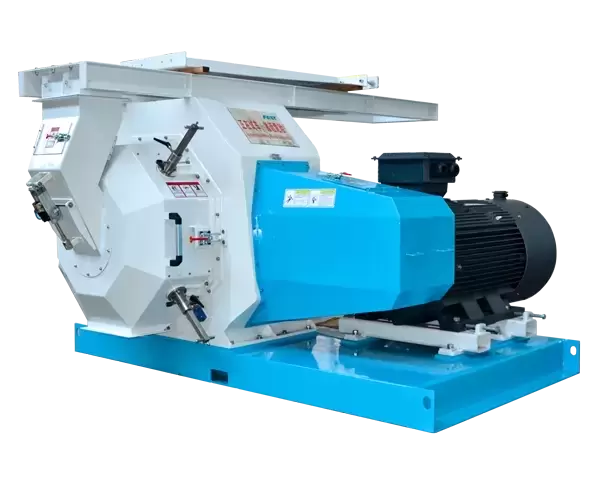
Flat die pellet milll is the most common type. It has the characteristics of simple structure and relatively low price. It is suitable for small-scale farms or family breeding. It is simple to operate and easy to maintain, but its production capacity is relatively low.
2. Ring Die Pellet MillRing die pellet mill is an efficient and high-yield equipment. It uses ring mode to press raw materials, has high production capacity and stable pellet quality, is suitable for large-scale farms, and can meet the needs of large amounts of feed. However, the price is higher and requires a larger investment.
3. Vertical Pellet MillThe vertical pellet mill is a piece of equipment with compact structure and small floor space. It is suitable for farms with limited space and can produce feed pellets efficiently. It is simple to operate and easy to maintain, but its production capacity is relatively low.
4. Roller Driven Pellet MillRoller driven pellet mill uses double rollers to press raw materials, which has high pressing efficiency and pellet quality. It is suitable for farms of various sizes, can meet different needs, is simple to operate and easy to maintain, and is a cost-effective choice.
5. Double Layer Pellet MillDouble layer pellet mill is a uniquely structured equipment with double layer mode that can improve production efficiency and pellet quality. It is suitable for small and medium-sized farms and can meet certain production needs. It's affordable and a solid performance option.
6. Water Drop Pellet MillWater drop pellet mill is an efficient and energy-saving equipment. It features a drop-shaped design that improves pellet quality and production efficiency. It is suitable for farms of all sizes and can meet different needs. However, the price is higher and requires a larger investment.
The above are several common pellet mills. Different types are suitable for different raw materials and production needs. Choosing a pellet mill that suits you is an important task for farmers. Depending on the size of the farm, production needs, budget and other factors, choosing the pellet mill that suits you will bring higher benefits and development to the breeding industry.
https://www.fast-js.com/industry-news/Analyzing-the-Different-Types-of-Pellet-Mill.html
Pressure sensors are widely used in various industries to measure and monitor pressure levels in different systems. However, like any other electronic device, pressure sensors can malfunction and require troubleshooting. In this article, we'll explore common causes of pressure sensor failure and how to diagnose and troubleshoot them.
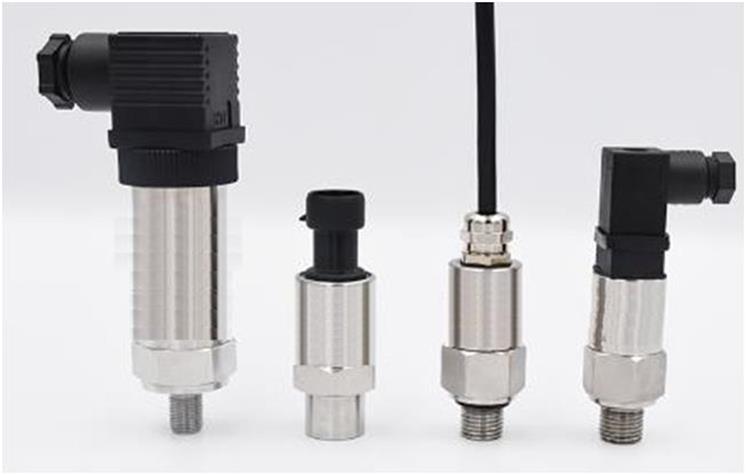
Pressure sensors are often installed in industrial environments or automotive engines and are susceptible to dust, grease, and other dirt. This dirt may clog the sensor's air inlet or pressure hole, causing the sensor to read inaccurately or even fail completely. Solutions include regular sensor cleaning and maintenance, and adding protective measures where possible, such as installing filters or seals.
Electrical failure:Electrical failure is another common cause of pressure sensor failure. This can include problems with cable connections, shorts or breaks in wiring, and unstable supply voltages. Solutions include checking and repairing electrical connection issues, ensuring the sensor's supply voltage is stable, and using guards where possible to protect the sensor from electrical interference.
Corrosion and oxidation:In humid or corrosive environments, the connectors and circuit boards of pressure sensors can be affected by corrosion and oxidation, resulting in reduced sensor performance or even complete failure. Solutions include using water- and dust-proof sensors or housings, regularly inspecting and cleaning sensor connectors, and using anti-corrosion coatings to protect the sensors when possible.
Mechanical damage:Pressure sensors are often installed in machinery or automobiles and are susceptible to vibration, shock, or other mechanical damage. This can cause internal components of the sensor to loosen, break, or become damaged, affecting sensor performance. Solutions include adding mechanical guards, regularly checking the installation location and status of the sensor, and using shock- and shock-resistant sensors when possible.
Temperature effect:High or low-temperature environments may affect the performance of the pressure sensor, causing inaccurate readings or failure. Solutions include selecting sensors suitable for a specific temperature range, adding temperature compensation devices, and controlling ambient temperature where possible to protect the sensor.
Electromagnetic interference:Electromagnetic interference refers to the electromagnetic field interference that exists in the environment where the sensor is located. These interferences can interfere with the sensor's circuitry, causing the signal output from the sensor to be unstable or distorted. If there is electromagnetic interference in the environment where the sensor is located, corresponding measures need to be taken, such as installing a shielding cover, replacing the sensor with better anti-interference performance, etc., to ensure that the sensor can work normally.
By understanding the common causes of pressure sensor failure and how to diagnose and troubleshoot the problem, we can ensure that pressure sensors continue to operate accurately and reliably in a variety of industrial applications.
https://www.dejintech.com/Pressure-Sensor-Troubleshooting-Guide.html
With the continuous development of information technology, optical communication, as a high-speed, large-capacity, and low-energy consumption communication method, is gradually becoming mainstream in the communication field. As an important part of the optical communication system, the optical module's performance indicators directly affect the communication quality and performance of the entire system. This article will discuss the performance indicators of optical modules and explore the significance and importance of each parameter.
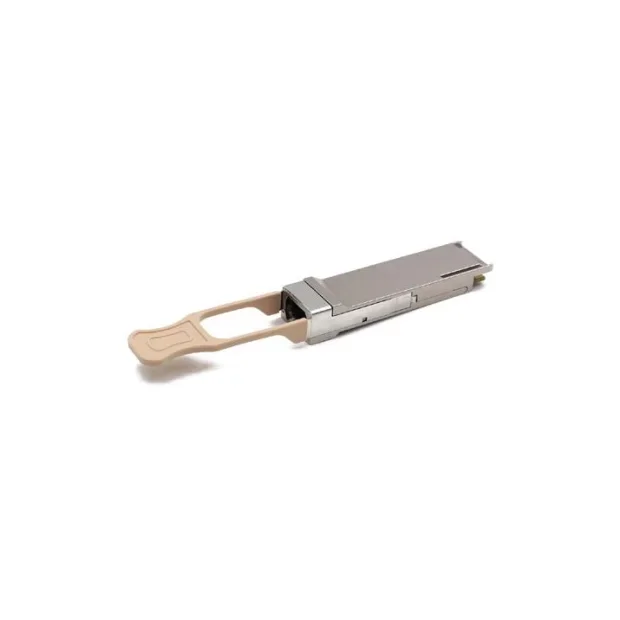
First of all, the performance indicators of optical modules include but are not limited to the following aspects:
1. Luminous power: Luminous power is the intensity of the optical signal output by the optical module, which directly affects the transmission distance and quality of the optical signal. The higher the luminous power, the farther the optical signal can be transmitted and the stronger the anti-interference ability.
2. Receiving sensitivity: Receiving sensitivity is the ability of the optical module to receive optical signals. It determines the reception effect of the optical module on long-distance or weak light signals. The higher the receiving sensitivity, the better it can receive optical signals transmitted over long distances and improve communication quality.
3. Modulation bandwidth: Modulation bandwidth is the frequency range that the optical module can support when transmitting data. It determines the rate and stability of transmitted data. The wider the modulation bandwidth, the higher the data transmission rate can be supported to meet higher communication requirements.
4. Attenuation value: The attenuation value is the degree of attenuation of the optical signal during transmission. It directly affects the transmission quality and stability of the optical signal. The lower the attenuation value, the smaller the optical signal loss during transmission, and the higher the communication quality.
5. Operating temperature range: The operating temperature range is the temperature range in which the optical module can work normally. It determines the applicability and stability in different environments. A good operating temperature range can ensure that the optical module can work normally under various environmental conditions and improve the reliability of the system.
6. Working voltage: Working voltage is another important performance indicator of the optical module. It refers to the voltage required for the normal operation of the optical module. The size of the working voltage directly affects the power consumption and stability of the optical module. Generally speaking, the lower the operating voltage, the lower the power consumption, but too low an operating voltage will also cause the stability of the optical module to decrease.
The above performance indicators are very important parameters of optical modules in practical applications, and they are directly related to the performance and stability of optical communication systems. In actual selection and application, these performance indicators need to be comprehensively considered based on specific communication requirements and environmental conditions to ensure that the optical communication system can achieve the expected communication effects.
In short, the performance indicators of optical modules are crucial to the performance and stability of optical communication systems. Only by fully understanding and paying attention to these performance indicators can we better select and apply optical modules and improve the communication quality and reliability of optical communication systems. I hope the content of this article can be helpful to you, thank you for reading!
https://www.fineconnco.com/Performance-indicators-of-optical-modules.html
